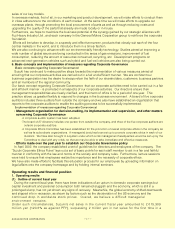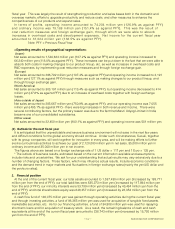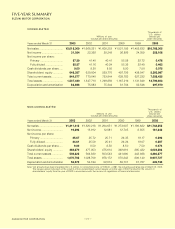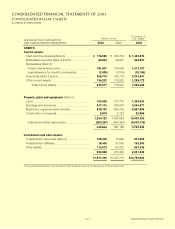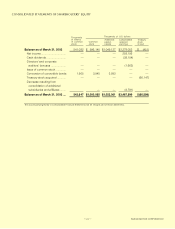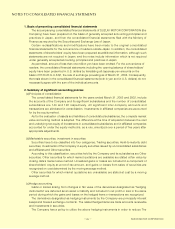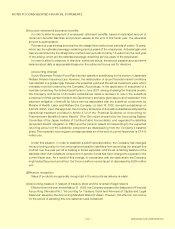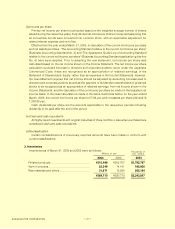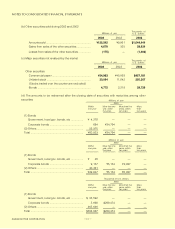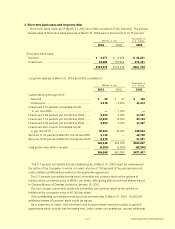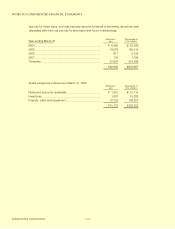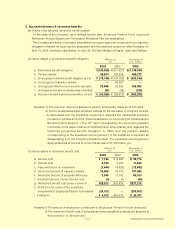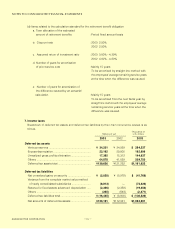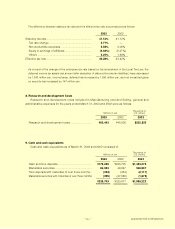Suzuki 2003 Annual Report Download - page 27
Download and view the complete annual report
Please find page 27 of the 2003 Suzuki annual report below. You can navigate through the pages in the report by either clicking on the pages listed below, or by using the keyword search tool below to find specific information within the annual report.
SUZUKI MOTOR CORPORATION
Company's exposure to the risk of interest rate and foreign exchange fluctuation. Thus, the
Company's purchases of the hedging instruments are limited to, at maximum, the amounts of the
hedged items. The Company evaluates effectiveness of its hedging activities by reference to the
accumulated gains or losses on the hedging instruments and the related hedged items from the
commencement of the hedges.
(d)Foreign currency translation
All monetary assets and liabilities denominated in foreign currencies, whether long-term or
short-term are translated into Japanese yen at the exchange rates prevailing at the balance sheet
date. Resulting gains and losses are included in net profit or loss for the period.
Assets and liabilities of the foreign subsidiaries and affiliates are translated into Japanese yen at
the exchange rates prevailing at the balance sheet date.
The shareholders' equity at the beginning of the year is translated into Japanese yen at the
historical rates. Profit and loss accounts for the year are translated into Japanese yen using the
average exchange rate during the year or, alternatively, using the exchange rates prevailing at the
balance sheet date. Differences in yen amounts arising from the use of different rates are
presented as "foreign currency translation adjustments" in the shareholders' equity.
(e)Inventories
Inventories are stated at the lower of cost or market value, cost being determined principally by
the periodic average method.
(f)Property, plant and equipment
Property, plant and equipment are stated at cost. Depreciation is principally computed by the
declining-balance method based on estimated useful lives of the assets (mainly 3-75 years).
Provision for additional depreciation to certain assets is made to reflect use of machinery and
equipment in excess of normal production schedules, a substantial portion of which is, however,
not tax deductible.
Maintenance and repairs, including minor renewals and improvements, are charged to income
as incurred.
(g)Leases
Finance lease transactions, except for those which meet the conditions that the ownership of the
lease assets is substantially transferred to the lessee, are accounted for on a basis similar to
ordinary rental transactions.
(h)Income taxes
The provision for income taxes is computed based on the pretax income included in
consolidated statements of income. The assets and liability approach is adopted to recognize
deferred tax assets and liabilities for the expected future tax consequences of temporary
differences between the carrying amounts and the tax bases of assets and liabilities.
27


